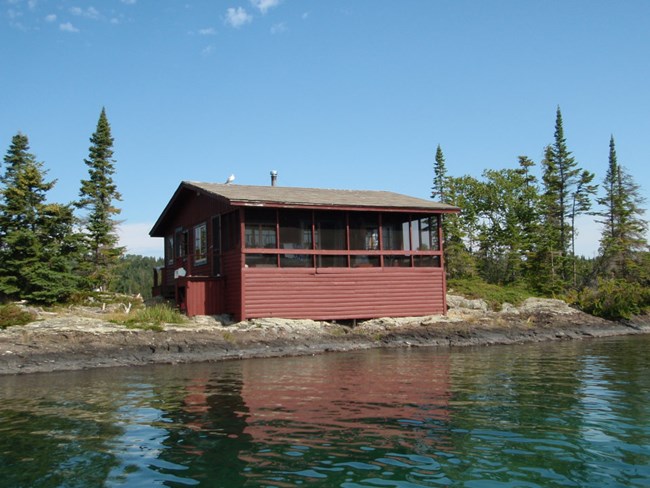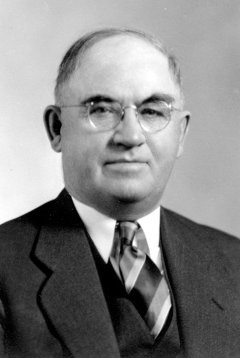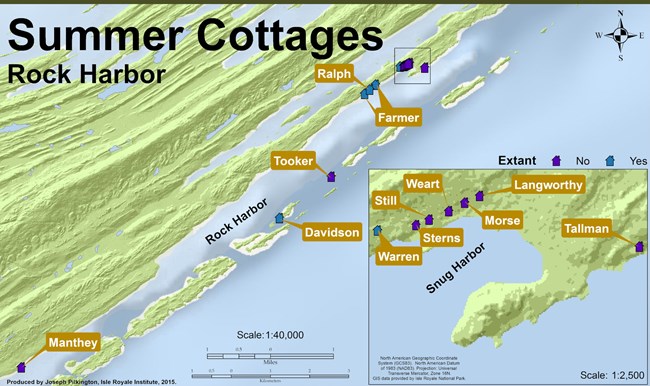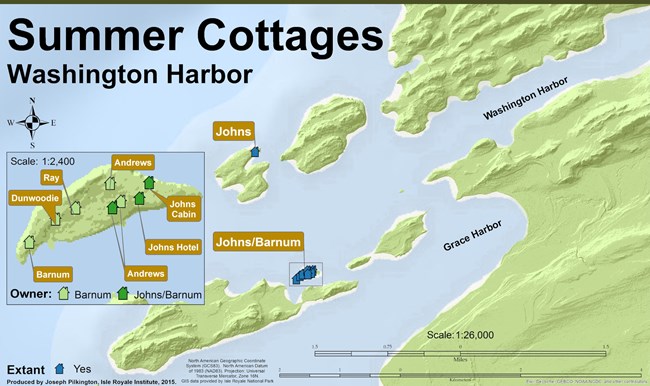Following the 1931 establishment of Isle Royale as a national park, the Isle Royale Commission was appointed to appropriate all private inholdings island-wide. By 1935 a majority of the island had been purchased from the largest landholders, mainly timber and mineral interests, leaving smaller clusters of individual properties owned by resort and summer cottage entities. In many cases these groups and families would sell outright, removing personal property from the island within a few years of purchase. Related buildings were usually removed within a few decades. In other cases, family members requested a life lease, which was a mechanism borrowed from Shenandoah National Park, where full-time occupants, usually farmers, were allowed to occupy previous residences for the remainder of their lives. For Isle Royale, the life-lease was extended to part-time island occupants and their minor children for the duration of their lives. This usually - but not always - equated to the property owner and their minor children. Following purchase, all buildings and lands were now owned by the Federal Government and all tax obligations were extinguished.
It is important to note that the Isle Royale Commission utilized the life-lease as a device to gain title to a property at little or no cost to the government, whereas an outright sale would typically command a higher cost to the taxpayer. If a life lease was requested, the number of individuals privy to that lease, along with their ages, was factored into the terms of the settlement. In every case, the leases were limited to two generations, that associated with the original title, and that concerned with living sons and daughters. Sometimes there were no descendants, such leases concerning only the property owners, i.e. one generation. In a few cases short-term life leases were granted, which allowed for three or five years of occupation. Separately, there are a few examples where outside families who were privy to the national park movement, along with the life lease option, and who found it desirable to own property within a national park setting, took measures to appropriate cabins and properties from existing owners before they sold to the government themselves. Immediately following purchase, the outside family then donated the property or sold to the Commission at a lower price in return for a life lease. In most cases, cabins and structures associated with former and existing life lease agreements remain present on the Isle Royale landscape, their existence today tied to the continuation of use.






